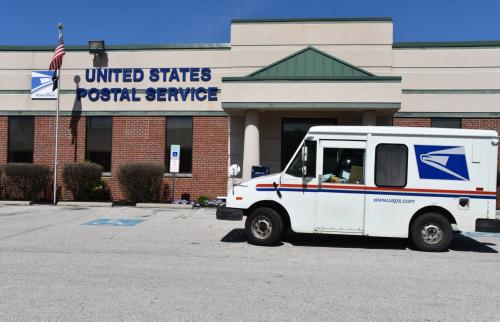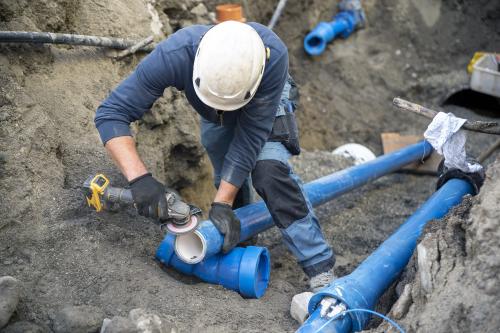As Flint’s water crisis continues to reverberate nationally, policymakers have turned their attention to the fundamental infrastructure challenges at hand. From Los Angeles to New York, many regions are not only contending with aging, overburdened water facilities—including areas with lead pipes similar to Flint—but are also confronting an enormous backlog of costs, severe financial constraints, and difficulty in coordinating action across thousands of individual community water systems.
In the near term, the biggest issue these regions face can often simply come down to identifying where the problems exist. More than a century old in some cases, pipes with the most pressing maintenance needs can be difficult to identify, as the risk for widespread leaks and other public health concerns mount over time. Meanwhile, the lack of timely updated information can extend well beyond lead service lines in places like Flint, making it difficult for utilities and other stakeholders to address wastewater upgrades, groundwater levels, and related water needs simultaneously.
In turn, public, private, and civic leaders frequently need to have better regional measures at their disposal to drive more efficient and equitable infrastructure improvements.
Of course, developing and applying any new metrics is easier said than done, especially given the difficulty in estimating local water needs with varying levels of regulatory oversight. Still, there are a number of steps that regions can take now to more precisely define their infrastructure gaps:
- Depending on the specific utility, for instance, increasing transparency on data already collected can make a big difference. In California, there has been a push to reveal more granular public data on water use, which can help aid in conservation efforts.
- Likewise, by producing more detailed metrics and visualizations of the infrastructure itself, regions can pinpoint needs in specific neighborhoods or even at individual addresses. For example, the Boston and Water Sewer Commission has created a lead service map, revealing what properties in the city have private lead service pipes.
- Encouraging more frequent and consistent testing also holds promise, particularly when it comes to detecting pollutants and other areas of concern. Under the Safe Drinking Water Act, the Lead and Copper Rule is perhaps the most notable example in this respect, where requiring more stringent testing—from the EPA to states to localities—can better safeguard all water users.
- At the same time, emphasizing a range of drinking water, wastewater, and stormwater needs is crucial, even when focusing on concerns over lead and similar pollutants. Regions are adapting to a variety of population pressures, climate fluctuations, and other challenges, which is driving the creation of new resilience strategies and measures in markets from Norfolk to Chicago.
- Finally, empowering consumers and stakeholders to voice their concerns can help spread new information. Flint’s crisis has elevated the importance of water as a national priority, largely driven by the efforts of researchers and local residents.
While the magnitude and urgency of the nation’s water challenges have steered greater interest in a federally led solution, states and localities remain at the forefront; they cover more than three-quarters of all public spending on water infrastructure and will likely need to play a bigger role in years to come through more coordinated leadership, more targeted investments, and increased technological innovation. Having clearer, more consistent metrics can accelerate these efforts and build momentum for future improvements.
The Brookings Institution is committed to quality, independence, and impact.
We are supported by a diverse array of funders. In line with our values and policies, each Brookings publication represents the sole views of its author(s).



Commentary
A surefire strategy to improve water infrastructure in Flint and beyond
March 18, 2016